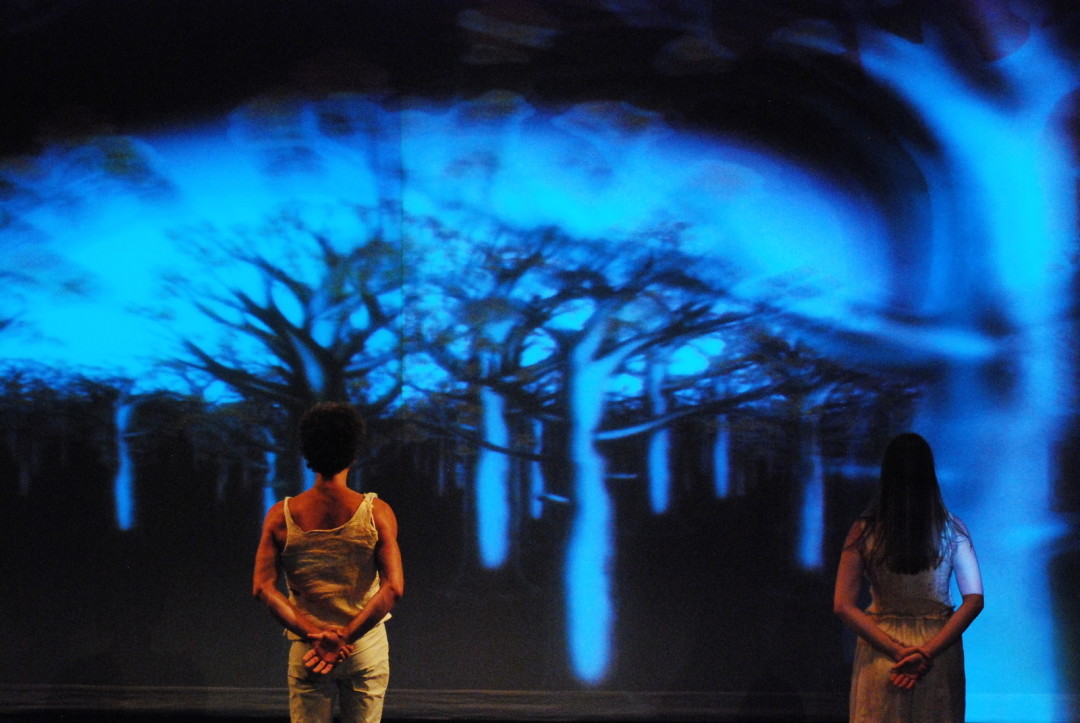TBA: bobbevy

Image: Jonah Levine
Is it still a gimmick if it works beautifully? This is how we disappear tracks its dancers’ movements through custom electronics, creating a real-time audiovisual response. The performers stroll through forests; they spin through swirling leaves and flocks of birds; they cast crackling silhouettes as bolts of electricity are projected onto their pale costumes. The crudely generated images and droning synthesized soundtrack create a tone of coarse artificiality, at once complemented and contrasted by the dancers’ fluid, angular movements. As with any ambitious interactive piece, it would have been easy for the stunt to fall flat. But, miraculously, it doesn’t.
Choreographer Suniti Dernovsek and visual artist David Stein, jointly known as contemporary dance company bobbevy, designed This is how we disappear to juxtapose the complexity of personal relationships with the unwavering passage of time. The pas de deux, performed by Jessica Hightower and Jesse Berdine, is a fragile balance of reliance and rejection, featuring hypnotic periods of slow, methodical weight bearing, and frenetic bursts of angular twists, tense gesticulation, and deep contractions. As the dancers wrap around each other, flashing bared teeth and eerily phony grins, it’s often difficult to know if they’re supporting each other or pushing away.
bobbevy: This is how we disappear
BodyVox
Sun at 8:30; Mon at 6:30
As this emotional balancing act unfolds, time marches steadily by in the background. Video (generated in real time in response to the dancers movements, although the correlation is not always clear) depicts birds steadily flapping computer-generated wings, and row after row of identical trees. The simple linearity of time contrasts the delicate, complicated tension of human relationships, and the media elements feel organically linked to the unfolding movement, despite their inherent artificiality.
With less skillful execution, the digital elements—which also includes a interlude of rapidly cycling fluorescent animal images projected over the dancers’ faces—would be distracting at best. But somehow, despite the electronically wired costumes and synthesized backdrop, this meditation on time and relationships is, at its core, simply a beautiful dance.
